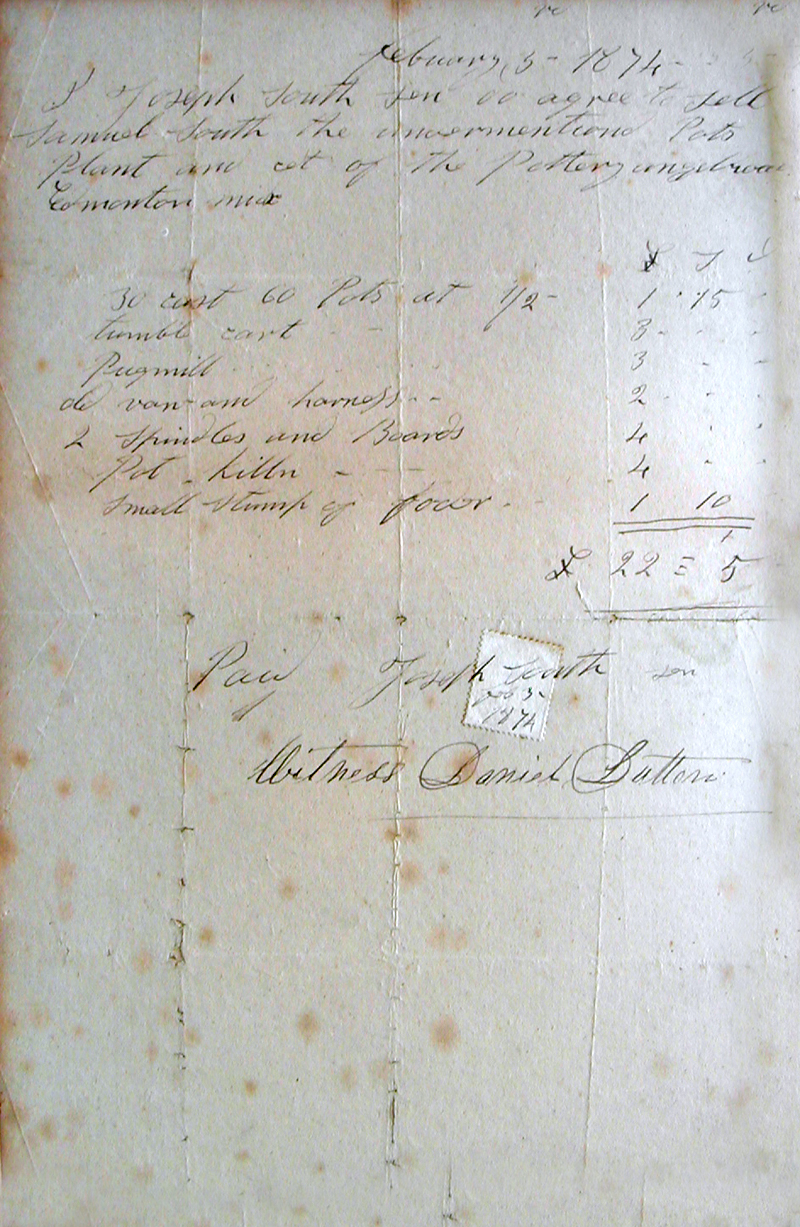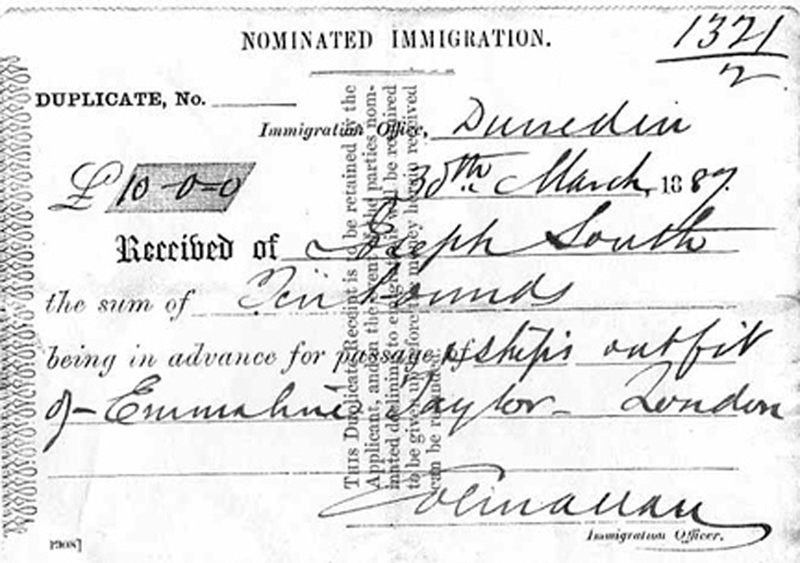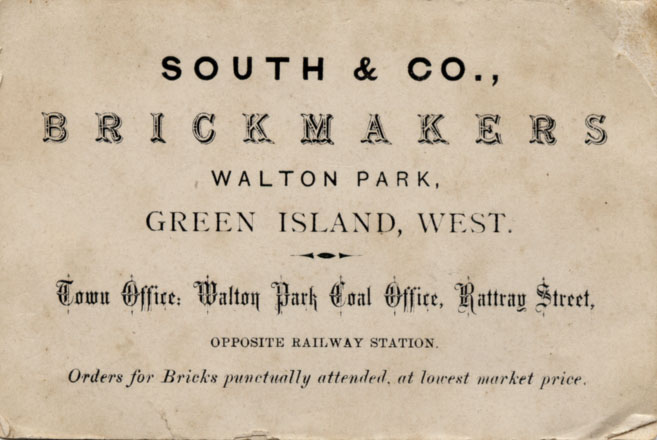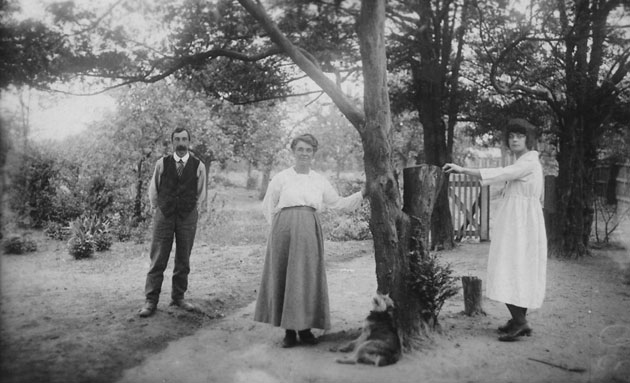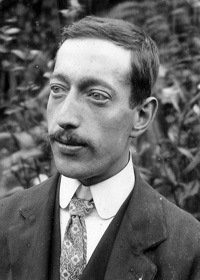|
UPDATE No 52 |
||
|
SOUTH FROM BARLEY |
||
|
Sales of South from Barley have gone well with over fifty copies despatched to New Zealand alone. Work is well underway on the next project which is the history of the development of the area around White Hart Lane and Devonshire Hill Lane which was, arguably, the last rural segment of the district until well into the third decade of the last century. Many will recall the family stories of the South children walking across the fields to school and of the lonely country lanes. Before the publication of South from Barley a more experienced author commented that as soon as the book was published further information would be discovered too late for inclusion. This wisdom has proved to be correct. The last Update (Update No 51) summarised the cache of letters written by Samuel South(2) to his New Zealand relatives and another important document has now come into the possession of the Archive. It had been thought that the sale document of the Angel Road pottery by Joseph South to his son Samuel South(1) in February 1874 had long since disappeared although a photograph of the document had survived. Contact has been made with Alan South, grandson of Samuel South(3), who acquired the bill of sale on the death of his grandfather. Alan has generously donated the document to the Archive and thanks are due to him not only for the donation but also for looking after it over the past years. A copy is reproduced below. Over recent months several interesting and important contacts have been made through the website including with the descendants of the Margrove and Hayhoe families who were the last occupiers of Devonshire Hill Farm. Also with the Moody family which had a long association with the South pottery. |
||
|
SALE DOCUMENT FEBRUARY 1874 |
||
|
|
||
|
JOSEPH SOUTH |
||
|
In addition to the letters described in Update 51 Judith Cranefield also provided further information about Joseph South.
On arrival in Dunedin in 1874 Joseph established a brickfield at Anderson's Bay and later in Walton Park on land leased from the provincial government. |
||
|
HAYHOE FAMILY |
||
|
Samuel and Emma Hayhoe with their six children moved into Devonshire Hill Farmhouse in 1918 and were to be the last tenants vacating the property shortly before its demolition in 1936. Samuel had enjoyed a colourful career which included playing Dick Whittington's cat in pantomime. During their occupation pigs were raised and vegetables grown on the holding. The produce, refreshments and sweets were sold from a stall set up on the green outside the entrance to the farm. |
||
|
|
||
|
MARGROVE FAMILY |
||
|
From 1908 George and Alice Margrove and their family of 8 sons and 2 daughters had occupied the farmhouse and lived there until 1917. His father had been foreman at a brickworks in Hemel Hempstead and George continued in the clay industry working as a potter at the pottery of Samuel South senior who became both his employer and landlord. His second son, Arthur, left school aged 13 in 1909 and worked for a time in the pottery office before enlisting in the army. Later Arthur went on to become a successful photographer with premises, Empire Studios, at Edmonton Green. In 1988 his daughter, Alice (b 1906), passed on her memories of the farm to her grandson. Alice recalled the large table in the kitchen around which the family gathered to play cards. Other entertainments were listening to a wind-up gramophone and family sing songs. The house was lit with oil lamps and in the kitchen there was a 'massive kitchen range' that also provided hot water and heating. Baths were taken in a zinc bath in front of the fire. Outside there was a verandah across the front of the house and a pathway though the garden leading to footbridge across the abandoned section of the New River. An orchard provided a variety of fruit and in a field beyond Alice remembered watching the players from Tottenham Hotspur football club train. Chickens were raised in the farmyard diary for their eggs. At Christmas time George would kill some of the poultry for the family and for sale. The Margroves kept two horse and traps, a small carriage that Alice could drive when she was old enough and a larger one used for family outings. She also had a pony that she would ride bareback in the neighbouring fields. George Margrove travelled in the larger trap on his visits to the local inns. So long as he remembered the name of the horse and where he had left the trap George could be taken home without further guidance on his part. Three of the sons enlisted for active service during the First World War. Two were injured and the third, Frederick Margrove, a private in the Royal Fusiliers, was killed in action in November 1917. In 1916 the Weekly Herald reported that Sergeant S E Wright the son-in-law of George Margrove also serving in the Royal Fusiliers had been awarded the Military Medal for bravery. He had taken part in the battle of Loos and in a later action despite serious injuries continued to assist his comrades to safety for which actions the decoration was awarded. The injuries he received resulted in the partial amputation of his left arm but he escaped death because a cigarette tin in his pocket had diverted a bullet from his heart. |
||
|
MOODY FAMILY |
||
|
It was common for members of the same family to work at the South pottery and at one time five brothers of the Moody family were employed Two of the brothers, Ernest and George, both potters, spent their entire working lives at the pottery. George, then aged 57, has been identified in the photograph of the 1928 works outing (Update No 18) and in view of their long service it is likely that both brothers appear in the 1895 photograph of the South workforce (Update No 30). Ernest told his children that he did not earn much money because "it fell through the bottom of the pots". His daughter wrote a family memoir which included many of her father's memories; 'During the early years of my father's employment there [Samuel South & Sons], no other building existed within three or four miles and one morning he helped to cut the rope of man who had hanged himself from a tree. On another occasion he and his companion found the body of a woman who had been murdered. One winter some 'wedgers' - who finished work earlier than the potters - pulled up several large turnips from a nearby field, scraped out the inside, made holes for the eyes, noses and mouths. They managed to stand lighted candles insde them, put them on sticks and stood the turnips on their sticks outside the window where the potters were working therefore as he men looked up they saw a white ghostly apparition staring in at them.' KLB 8/07 |
